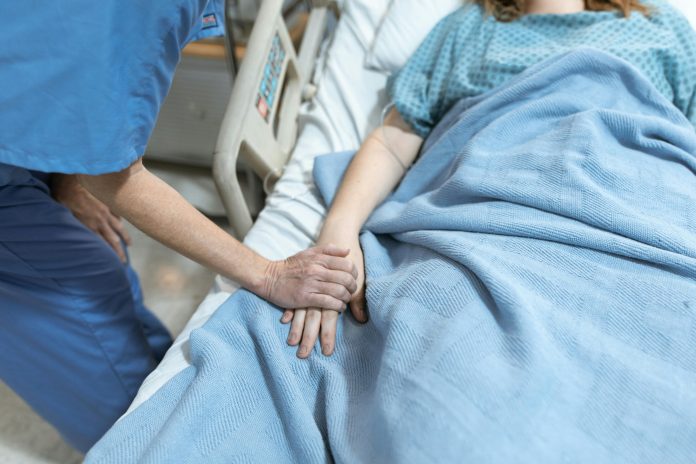Body contouring has become a popular option for individuals looking to achieve their desired shape after weight loss or other body changes. This category of cosmetic procedures includes tummy tucks, liposuction, body lifts, and more. While the results can be transformative, the recovery period is a crucial phase that requires attention and care.
Understanding the healing process helps individuals prepare for what to expect, manage their recovery effectively, and achieve the best possible results. Whether it’s swelling, discomfort, or gradual progress toward the final outcome, knowing the timeline and steps involved can make the experience more manageable.
The Initial Recovery Phase
The first few days after body contouring are often the most challenging. During this time, patients may experience swelling, bruising, and soreness in the treated areas. These symptoms are normal as the body begins to heal and adjust to the changes made during surgery.
Rest is vital during this phase. Most surgeons recommend limiting movement and avoiding activities that could strain the surgical areas. Patients should follow post-operative instructions carefully, such as wearing compression garments, which help support the body as it heals. These garments also play a role in reducing swelling and minimizing discomfort.
Pain management is another key consideration in the initial phase. Surgeons often prescribe medications to help with soreness, but it’s important to take them as directed and communicate any unusual side effects or concerns with the medical team.
Managing Swelling During Healing
Swelling is a common and expected part of the recovery process after body contouring. Tummy tuck swelling is a particular concern for those who elect to go through with the procedure, especially during the first few weeks post-surgery. This swelling occurs as the body reacts to the procedure and begins repairing itself.
To manage swelling effectively, compression garments are an essential tool. These garments provide support and help reduce fluid buildup in the surgical area. Staying hydrated is another simple yet effective way to aid the body in flushing out excess fluids and speeding up the healing process.
Elevating the affected area, when possible, can also help reduce swelling. For tummy tucks, lying with the upper body slightly raised and the knees bent can minimize pressure on the abdomen, leading to improved comfort and reduced puffiness. While swelling may be noticeable early on, it typically subsides gradually over several weeks, allowing patients to see the results of their procedure more clearly.
Long-Term Healing Expectations
As the initial recovery phase passes, the focus shifts to the long-term healing process. Swelling and bruising begin to fade, revealing more of the final results. However, patience is critical because complete healing can take weeks or even months, depending on the procedure and individual factors.
During this time, some residual swelling may linger, especially in areas like the abdomen after a tummy tuck. It’s important to follow up with your surgeon regularly to monitor progress. While activities like walking can be introduced to promote circulation, more strenuous exercises should be avoided until the surgeon gives the green light.
The appearance of scars is another aspect of long-term healing. While scars are a natural part of surgery, they tend to fade over time with proper care. Applying recommended creams or treatments and protecting the area from sun exposure can help minimize their visibility.
Read more: The Evolution of Beauty Standards: Exploring Cultural Shifts and Trends in Plastic Surgery
Tips for Supporting the Healing Process
Taking care of your body during recovery is essential for optimal results. Here are some actionable steps to support the process:
- Follow Post-Operative Instructions: Your surgeon’s guidelines are tailored to your specific procedure and recovery needs. Adhering to these recommendations can help you heal faster and avoid complications.
- Maintain a Balanced Diet: Eating nutrient-rich foods helps the body repair itself. Focus on lean proteins, fresh fruits, vegetables, and whole grains. These foods provide the vitamins and minerals needed for tissue healing.
- Stay Hydrated: Drinking enough water helps flush toxins from the body and supports the reduction of swelling. Hydration also promotes overall health and energy levels during recovery.
- Get Plenty of Rest: While light movement is encouraged, proper rest is equally important. Overexertion can delay healing, so listen to your body and take breaks when needed.
- Avoid Smoking and Alcohol: Habits like these can interfere with recovery by delaying the healing process and raising the likelihood of complications. It’s best to refrain from both during this critical period.
By incorporating these habits, you can create an environment that supports your body’s natural healing capabilities.
When to Contact Your Surgeon
Though recovery from body contouring usually progresses without major issues, it’s important to recognize signs that may require medical attention. Some swelling, bruising, and discomfort are expected, but certain symptoms could indicate complications. These include:
- Persistent or worsening pain.
- Excessive redness or warmth around the surgical site.
- Unusual discharge or signs of infection.
- Prolonged or severe swelling that doesn’t improve over time.
Regular follow-up appointments are an opportunity to discuss any concerns and assess your healing progress. Don’t hesitate to contact your surgeon if something doesn’t feel right or if you’re unsure about a symptom. Prompt action can address potential issues early and help you stay on track with your recovery.
Recovering from body contouring surgery is a journey that requires time, patience, and commitment. While the process may have its challenges, understanding what to expect and taking proactive steps can make a significant difference. By managing swelling, supporting your body with healthy habits, and staying in touch with your surgeon, you set the stage for a smoother recovery and the long-lasting results you desire.

